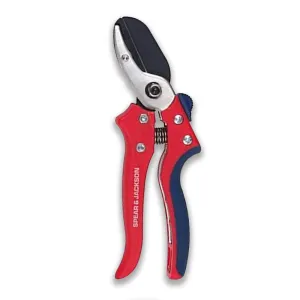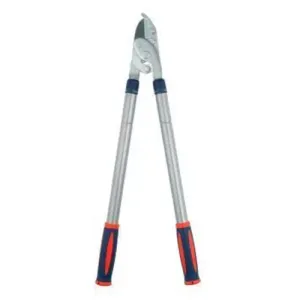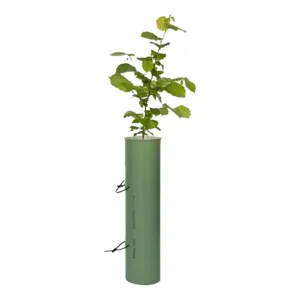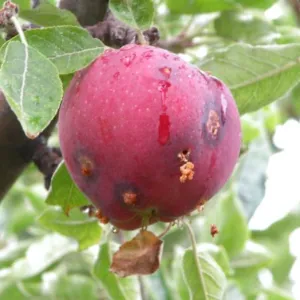You will need:
- Sharp secateurs
- Loppers
- Pruning saw
- Gloves
Why Prune?
Fruit trees need to be regularly pruned. This is to ensure the most productive fruiting from your tree. It will also prevent the tree becoming full of old branches. This can in turn lead to the introduction of disease and pests.
Winter Pruning of Free Standing Fruit Trees
These are apples, pears, quince, crab apples and medlars that are not trained to a specific shape (such as cordon or espalier which are trained to grow against a wall), but are allowed to grow into tree with a main trunk and bush canopy. The only exceptions are a few apples which bear fruit on the tips of newer stems. These are Bramleys Seedling, Blenheim Orange, Discovery and Worcester Permain which are some of the more popular varieties. We will look at these in more detail.
Fruit tree pruning for free standing trees is best done when the fruit tree is dormant in November to early March depending on the weather. It should be between when the leaves have fallen in Autumn and when the buds are beginning to open in the Spring. Pruning at this time of year will help produce stronger flower buds in the Spring as the sap will be concentrated into fewer buds. So instead of the tree spreading its energy between lots of little buds, it can put its energy into a few bigger buds producing better quality fruit.
It is important that the tools are sharp to make a clean cut. A poor cut can leave a messy open wound which is perfect for disease to enter.
How To Prune:
The first things to remember are the 3 Ds ….. You need to remove any wood or stems that are:
- Dead
- Damaged
- Diseased
You also need to cut out any branches that are crossing over each other, as they can rub against each other and leave open wounds. If there are lots of branches growing into the centre of the tree, these also need to be thinned out. They can be removed completely. The centre of the tree needs to be open and not overcrowded. Think of an open goblet shape. This will allow the air to circulate around the tree and the sun will be able to reach the fruits to ripen them. A cut should be made directly above an outward facing bud (or stem if you are cutting into older wood with a pruning saw). The cut should be slightly sloped so that water can run off. You may need to stand back and look at the work you have done to see if you have created an even, open shape. Remember, you can take more branches and stems off, you cannot add them back on once they have gone.
The next thing to look for is shortening last seasons growth. The stems that have grown in the past year need to be cut back to between 4 and 6 buds from the base. These stems will be thinner, softer and silvery grey in colour compared to the older wood from previous seasons growth.
Finally the leader can be cut back to keep the tree at the height you want. The leader is the new growth at the tip of each main branch. This can be cut back by one third of the overall length of the leader. Once again this cut needs to be made directly above an outward facing bud, with a sloped cut.
To avoid stressing the tree more than necessary, do not remove more than 20% of the canopy in one year. This will encourage the tree to grow lots of watershoots. These are tall upright branches that won’t produce flowers and fruit but will use up energy to grow.
As previously discussed, there are a few apple varieties which are tip bearers. These are Bramleys Seedling, Blenheim Orange, Discovery and Worcester Permain. These need to be dealt with slightly differently. The older branches which have previously fruited need to be pruned back to a strong younger shoot closer to the main trunk. Choose 20% of these branches to take out. This will help stop the branches becoming too long and snapping under the weight of too much fruit.
Summer Pruning of Free Standing Fruit Trees
Well established fruit trees can be pruned in July to improve the fruiting and limit the size of the tree. This includes crops such as Apples, Pears, Cherries, Apricots, Nectarines, Quince, Peaches and Mullberries. Stone fruits should always be pruned at this time of year and not in Winter. If you were to prune them in Winter it can encourage a disease called silver leaf which can be devastating. Pruning in the Summer will remove some of the young growth which uses a lot of nitrogen. The energy can then be put into forming the flowers and the fruit. These soft, green, new shoots also attract pests and diseases and require a lot of water to grow. Water is much better used to ripen the fruits rather than grow unnecessary foliage.
Firstly, the lead shoot at the end of each branch can be reduced by half it’s length. You need to ensure you are only pruning soft, new growth and cutting directly above a leaf. This will encourage the tree to shoot out from this point and create a bushier tree rather than lots of long stems which wouldn’t be able to carry the weight of fruit.
Sideshoots along each branch can be cut back. These can be cut back fairly harshly, down to 2 or 3 buds from the base of the this years growth. Once again, cutting directly above a bud. The ripening fruit does not need to be touched.
This is also a good time to fertilise fruit trees. Fruit trees will need a lot of extra nutrients as they are working hard to ripen fruit but also maintain healthy leaves and strengthen shoots as well as develop a strong root structure. A Slow Release Fertiliser is a great idea to put down and doesn’t need to be constantly re-applied. The nutrients will be released slowly as the plant needs it.
















